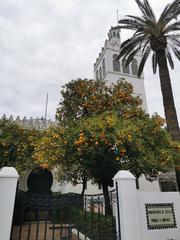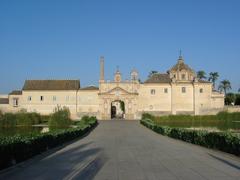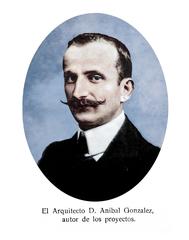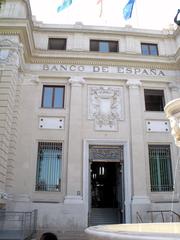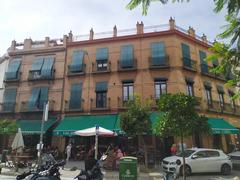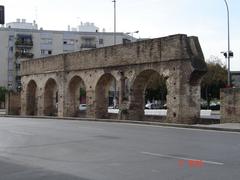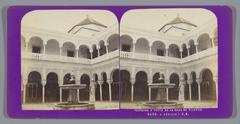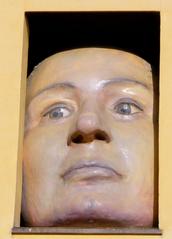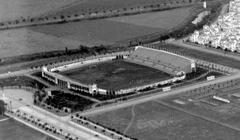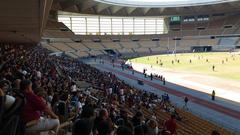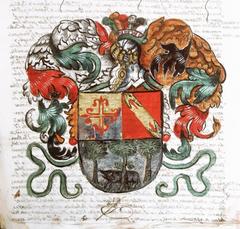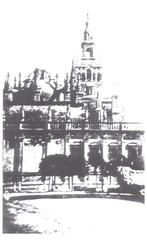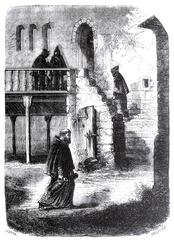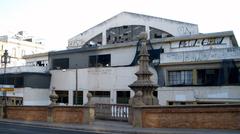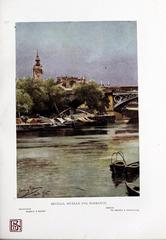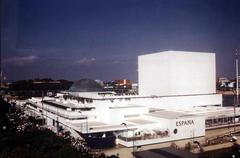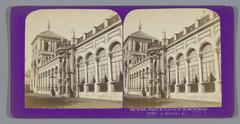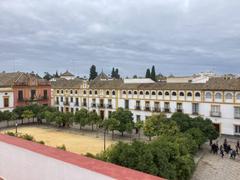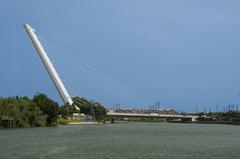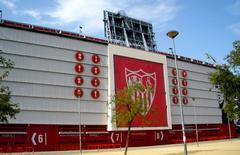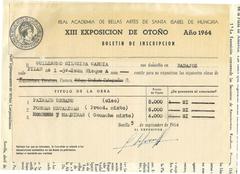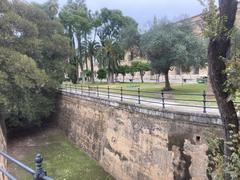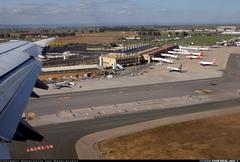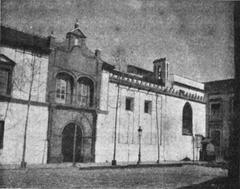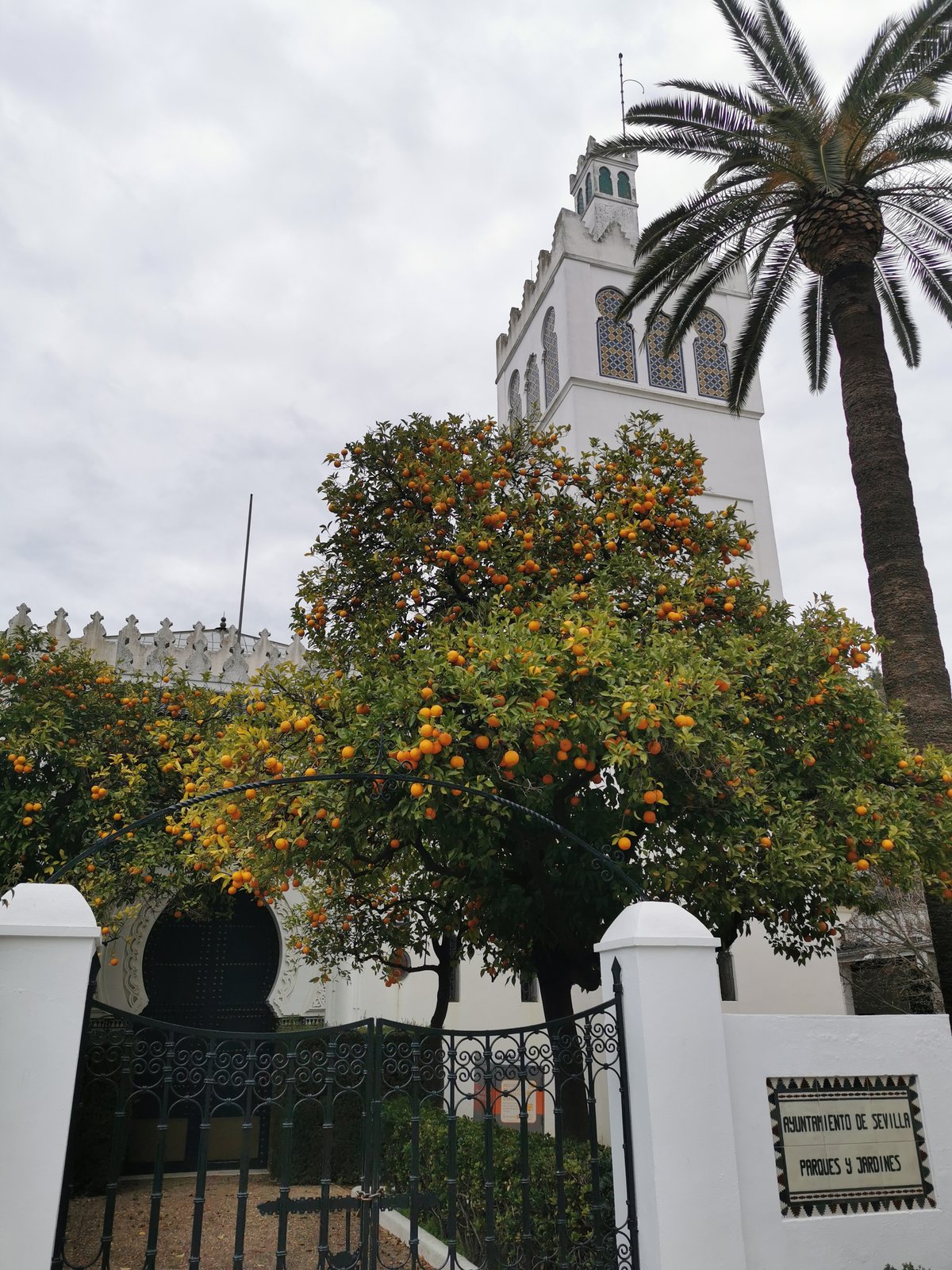
Pabellón De Marruecos Para La Exposición Iberoamericana De 1929
Pabellón de Marruecos in Seville: Visiting Hours, Tickets, and Historical Significance
Date: 14/06/2025
Introduction
The Pabellón de Marruecos, or Moroccan Pavilion, stands as a distinctive symbol of the cultural and historical ties between Spain and Morocco. Originally constructed for the Ibero-American Exposition of 1929, this architectural gem in Seville’s Parque de María Luisa not only showcased Morocco’s rich heritage but also embodied the spirit of international cooperation and exchange that defined the exposition. Today, it remains an essential stop for those interested in history, architecture, and the enduring relationship between Andalusia and the Maghreb (americasbesthistory.com).
This detailed guide explores the pavilion’s origins, architectural features, practical visitor information—including hours and ticketing—and its legacy within Seville’s cultural landscape. Whether you are a history enthusiast, architecture lover, or a traveler seeking unique experiences, the Pabellón de Marruecos offers a window into the vibrant interplay of tradition and innovation.
Table of Contents
- Historical Context: The Ibero-American Exposition of 1929
- Architectural and Cultural Significance
- Practical Visitor Information
- Nearby Attractions & Travel Tips
- Legacy and Adaptive Reuse
- Frequently Asked Questions (FAQ)
- Summary and Recommendations
- Sources and Further Reading
Historical Context: The Ibero-American Exposition of 1929
Origins and Vision
The Ibero-American Exposition of 1929 in Seville was conceived as an international event to strengthen diplomatic, cultural, and economic ties between Spain, Latin America, Portugal, the United States, and Morocco (americasbesthistory.com). Planned from the early 1910s but delayed by global events, the exposition spurred major urban renewal in Seville, resulting in the construction of monumental buildings and the redesign of Parque de María Luisa by Jean-Claude Nicolas Forestier (visitarsevilla.info).
Role of National Pavilions
Central to the exposition was the creation of national pavilions, each designed to reflect the unique architectural traditions and cultural identity of the participating nations. Twenty-three countries contributed, with over 100 buildings constructed; today, only a fraction—such as the Moroccan Pavilion—remain as cultural landmarks (visitasevilla.es).
Morocco’s Participation and Location
Morocco’s involvement highlighted its historical relationship with Spain, particularly during the protectorate era. The pavilion was strategically placed along Avenida de las Palmeras and near Paseo de las Delicias, adjacent to pavilions from other nations, forming a vibrant architectural ensemble within the park (patrimoniodesevilla.es).
Architectural and Cultural Significance
Design and Influences
The Pabellón de Marruecos was designed by José Gutiérrez Lescura, with artistic input from Mariano Bertuchi. The structure draws on traditional Moroccan and Moorish elements—horseshoe arches, zellige tilework, carved plaster, and tranquil courtyards—evoking the medinas and palaces of Morocco (Springer).
Layout and Features
The pavilion’s layout centers around a courtyard, planted with orange trees and accented by fountains, creating a serene oasis. The main entrance is marked by a richly decorated horseshoe arch, while interiors feature exhibitions of Moroccan art, textiles, ceramics, and historic displays. The architecture celebrates shared Andalusian and Moroccan heritage (andalucia.com).
Symbolism
Architectural motifs and decorative programs reference centuries-old cross-cultural exchanges, with details such as the eight-pointed star, intricate mosaics, and geometric plasterwork. The pavilion stands as a testament to the enduring artistic dialogue across the Mediterranean.
Practical Visitor Information
Location and Access
- Address: Avenida de Moliní, near Paseo de las Delicias, Seville, Spain (Waymarking)
- Access: Easily reached by public transport, taxi, or on foot via Maria Luisa Park.
Visiting Hours and Tickets
- 1929 Pavilion: Currently houses the Administrative Service of Parks and Gardens; open during standard office hours. Interior access is limited and best arranged in advance or during special heritage events (Waymarking).
- Expo 92 Pabellón Hassan II (Fundación Tres Culturas):
- Hours: Tuesday–Saturday, 10:00 AM to 6:00 PM. Closed Sundays and Mondays.
- Admission: Free; guided tours must be reserved in advance (Tres Culturas).
- Guided Tours: Last about one hour, covering gardens and interiors.
Accessibility
Both the 1929 pavilion and the modern Pabellón Hassan II are largely wheelchair accessible. Contact the Fundación Tres Culturas in advance for specific accommodations.
Facilities
While the 1929 pavilion lacks visitor amenities due to its administrative use, Maria Luisa Park offers cafés, benches, and public restrooms. The Expo 92 pavilion provides accessible visitor facilities during tours and events.
Nearby Attractions & Travel Tips
- Maria Luisa Park: Home to several exposition pavilions and lush gardens—a highlight of Seville historical sites (Visit Andalucia).
- Plaza de España: Iconic monument adjacent to the park, renowned for its grandeur and tilework.
- Museums: Archaeological Museum of Seville and Museum of Arts and Popular Customs are nearby.
- Cultural Centers: Fundación Tres Culturas offers regular events, exhibitions, and tours at the Pabellón Hassan II (Tres Culturas).
Travel Tip: Weekday mornings are ideal for fewer crowds and optimal lighting for photos. Respect the administrative function of the 1929 pavilion and confirm visiting arrangements in advance.
Legacy and Adaptive Reuse
Following the exposition, the Pabellón de Marruecos has served various roles—from exhibition space to administrative headquarters—demonstrating a successful model of preservation and adaptive reuse. The creation of the Pabellón Hassan II for Expo 92, now home to Fundación Tres Culturas del Mediterráneo, continues this tradition, fostering intercultural dialogue through cultural programs and public events (Recorredores). Both pavilions reflect Seville’s ongoing commitment to honoring its diverse historical legacy.
Frequently Asked Questions (FAQ)
Q: What are the visiting hours for the Pabellón de Marruecos?
A: The 1929 pavilion is open during standard office hours due to its administrative function; interior access is limited. The Pabellón Hassan II is open Tuesday–Saturday, 10:00 AM to 6:00 PM.
Q: Are tickets required?
A: Admission to both pavilions is generally free; guided tours at the Pabellón Hassan II require advance booking.
Q: Is the pavilion wheelchair accessible?
A: Yes, both sites offer accessibility features, but some historic elements may present challenges.
Q: Are guided tours available?
A: Scheduled tours are available at the Pabellón Hassan II via Fundación Tres Culturas; the 1929 pavilion offers tours only during special events.
Q: Can I take photographs?
A: Exterior photography is encouraged; interior photography at the 1929 pavilion may be restricted due to administrative use.
Summary and Recommendations
The Pabellón de Marruecos encapsulates the enduring cultural connection between Spain and Morocco, offering visitors a unique blend of architectural splendor, historical depth, and opportunities for intercultural engagement. Whether exploring the 1929 pavilion’s Moorish-inspired façade or the contemporary Pabellón Hassan II’s innovative design, visitors are treated to a living legacy of artistry and exchange.
For the best experience:
- Confirm visiting hours and tour availability in advance.
- Combine your visit with a walk through Maria Luisa Park and surrounding museums.
- Leverage resources from Fundación Tres Culturas and official tourism platforms for up-to-date information.
Sources and Further Reading
- Visiting the Moroccan Pavilion in Seville: History, Architecture, and Visitor Information (americasbesthistory.com)
- Patrimonio de Sevilla: Itinerary of the Ibero-American Exposition Pavilions
- Pabellón de Marruecos Seville: Visiting Hours, Tickets, and Architectural Highlights (Tres Culturas)
- Andalucia.com: Seville Expo Information
- Discovering the Pabellón de Marruecos: Visiting Hours, Tickets, and Historical Significance (Diario de Sevilla)
- Visiting the Pabellón de Marruecos in Seville: Hours, Tickets, and Historical Insights (Waymarking)
- Recorredores: El Pabellón de Marruecos, recorriendo los vestigios de la Expo92
- Springer: Moroccan Architecture in the Spanish Protectorate
- Visit Andalucia: Things to Do in Seville
Plan your visit to the Pabellón de Marruecos and immerse yourself in one of Seville’s most captivating historical sites. For interactive guides, event updates, and insider tips, download the Audiala app and follow Fundación Tres Culturas on social media.
